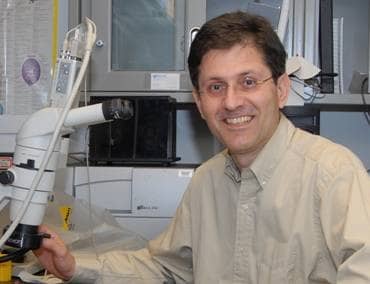
George Hajishengallis (pictured) and his team published their findings in the February 16 issue of the journal Science Signaling. The discovery could have implications for treating periodontal disease. P. gingivalis also is believed to play a role in heart disease, stroke, and other major systemic health problems.
The researchers learned how P. gingivalis hijacks a complement protein, C5, for communication with Toll-like receptors (TLRs). Typically, TLRs notify a white blood cell of a bacteria’s presence and then stimulate the cell to kill the pathogen. In its active form, C5 also recruits white blood cells that destroy bacteria.
P.gingivalis attacks the C5 molecule and selectively generates C5a for manipulation of white blood cells through an undermining communication mechanism between the C5a receptor and TLR2. This impairs the ability of the cells to kill this oral pathogen.
“P. gingivalis is very sophisticated, in that it activates aspects of white blood cell function that will help it and inhibits aspects that hurt it,” Hajishengallis said. “This is the first report of a pathogen capable of proactively instigating and exploiting communication signaling between complement and Toll-like receptors, rather than undermining either system independently. It’s like infiltrating between your enemy’s lines.”
Lab experiments confirmed that blocking the C5a receptor inhibits both inflammation and the persistence of P. gingivalis. Hajishengallis and his team hope this mechanism will translate to humans as a way to prevent periodontal and potentially other systemic diseases.









